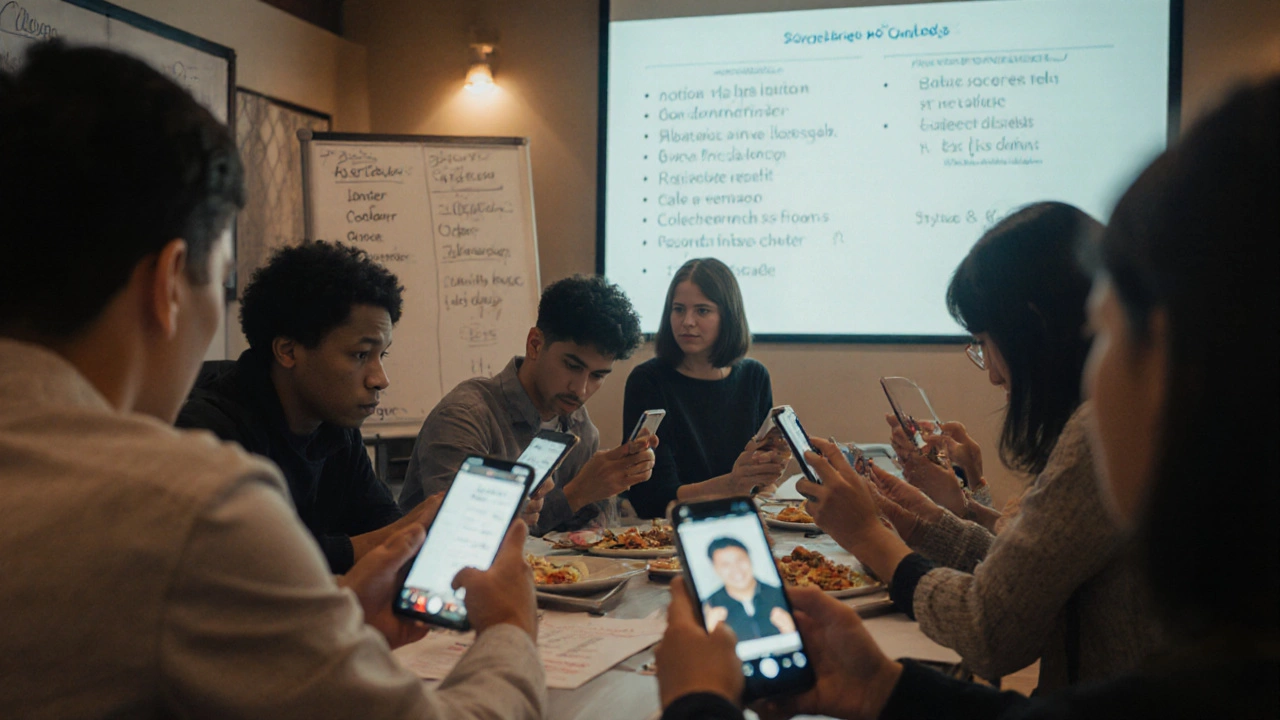Lesson Time Allocator
Your 45-Minute Lesson Plan
Adjust time allocations to match best practices for adult beginners. The ideal distribution ensures maximum engagement and practical speaking practice.
Ever walked into a classroom of grown‑ups who feel nervous about speaking English and wondered how to get them talking? You’re not alone. Adult beginners bring a mix of life experience, fear of making mistakes, and a desire for practical results. This guide walks you through every stage - from setting the right mindset to delivering a complete lesson plan - so you can turn that nervous crowd into confident speakers.
Quick Takeaways
- Adult learners need relevance, autonomy, and immediate practice.
- Combine the Communicative Approach with Task‑Based Learning for maximum engagement.
- Focus on high‑frequency vocabulary, pronunciation drills, and error‑friendly feedback.
- Leverage simple tech tools (Zoom, Kahoot, Google Docs) to keep lessons dynamic.
- Use a 45‑minute lesson template: Warm‑up, Input, Practice, Production, Review.
Understanding Adult Learners
Andragogy is the theory of adult learning that emphasizes self‑directedness, life experience, and problem‑centered approaches. Unlike younger students, adults are goal‑oriented; they ask, “How will this help me now?” Therefore, your lessons must answer that question within the first five minutes.
Key principles to remember:
- Explain the why - link language to real‑world tasks (ordering coffee, writing an email).
- Allow choice - let learners pick topics that matter to them.
- Respect prior knowledge - draw parallels to experiences they already have.
Core Teaching Methods
Three proven methods work especially well with adult beginners. Below is a side‑by‑side look.
| Method | Key Feature | Best Use Case | Potential Drawback |
|---|---|---|---|
| Communicative Approach | Real‑life interaction, meaning‑focused | Speaking drills, role‑plays | May neglect explicit grammar |
| Task‑Based Learning | Learning through completing tasks | Planning a trip, filling a form | Requires careful task design |
| Grammar‑Translation Method | Focus on rules, translation exercises | Introducing basic sentence structure | Can feel too academic for adults |
For adult beginners, start with the Communicative Approach to build confidence, sprinkle in Task‑Based activities for relevance, and use Grammar‑Translation sparingly for quick rule checks.
Building Vocabulary and Pronunciation
Adults often have limited exposure to everyday English words. Prioritize the 1,000 most frequent terms - those that appear in daily conversations, news headlines, and basic workplace documents. Use spaced‑repetition tools like Anki or Quizlet to reinforce memory.
Pronunciation matters because mis‑pronounced words can lead to misunderstandings. Incorporate these three drills:
- Minimal Pair Practice - contrast sounds like /b/ vs /p/ ("bat" vs "pat").
- Shadowing - learners listen to a short audio clip and repeat it instantly.
- Intonation circles - map rising/falling pitch on sentences like “Are you coming?”
Pair these drills with visual aids (mouth diagrams) and give instant, low‑pressure feedback.

Managing Errors and Building Confidence
Adults fear looking foolish. Your error‑correction strategy should be supportive, not punitive. Try the "sandwich" method: highlight a correct element, note the error, then suggest a revision.
Another useful technique is Peer‑Correction. Pair learners and let them gently point out each other's mistakes. This builds a community feel and reduces teacher pressure.
Remember to celebrate small wins - a correct order at a café, a clear voicemail - because confidence fuels further practice.
Using Technology and Resources
Even a basic Learning Management System (LMS) like Google Classroom can streamline homework, track progress, and host video recordings. For live interaction, Zoom breakout rooms let small groups role‑play real scenarios.
Free content sources that work well for beginners:
- BBC Learning English - short news clips with transcripts.
- Duolingo Stories - context‑rich, bite‑size narratives.
- ESLPod - podcasts focused on everyday situations.
Mix these resources into a weekly schedule: two minutes of listening, five minutes of speaking, three minutes of writing.
Sample 45‑Minute Lesson Plan
- Warm‑up (5 min): Quick ice‑breaker - “Two truths and a lie” about weekend plans.
- Input (10 min): Introduce 8 key phrases for ordering food. Show pictures, write the sentences on the board, and model pronunciation.
- Guided Practice (10 min): Role‑play in pairs using a menu handout. Teacher circulates, offering corrective feedback.
- Production (15 min): Small groups create a short video ordering a meal at a fictional restaurant. Record on phones or Zoom.
- Review (5 min): Watch one video together, highlight three correct usages, and note two common errors for next class.
Adjust timing based on class size and energy level. The key is to keep the flow from receptive (listening/reading) to productive (speaking/writing) activities.

Common Pitfalls & Pro Tips
Pitfall #1: Overloading grammar explanations. Pro tip: Use a "one rule, one example" approach and let learners discover patterns through usage.
Pitfall #2: Ignoring cultural references. Pro tip: Bring in UK‑specific etiquette (politeness formulas, small talk) to make lessons relatable.
Pitfall #3: Relying solely on textbooks. Pro tip: Blend authentic materials - menus, bus timetables, email templates - to show language in action.
By staying flexible and listening to adult learners’ feedback, you’ll continuously refine your approach.
Final Thought
Teaching English to adult beginners is less about perfection and more about practical communication. When you align methodology, content, and technology with the adult learner’s need for relevance, you’ll see rapid gains - both in confidence and fluency. Ready to try it? Pick a method, design a short task, and watch your class transform.
Frequently Asked Questions
How many new words should I introduce per lesson?
Aim for 5‑8 high‑frequency words. Too many overwhelm adults and reduce retention. Pair each word with a visual cue and a short speaking activity.
Is it better to focus on grammar first or speaking?
Start with speaking. Adults feel motivated when they can use language right away. Introduce grammar lightly as it becomes necessary for accuracy.
What tech tools work best for beginners?
Zoom for live interaction, Kahoot for quick vocab quizzes, and Google Docs for collaborative writing. All are free or low‑cost and easy to set up.
How do I handle shy students?
Give them low‑stakes tasks first, like whisper‑pair practice. Praise any attempt, and gradually increase interaction complexity as confidence builds.
Can I teach without a textbook?
Absolutely. Use authentic materials - menus, news headlines, short videos - and structure lessons around real‑world tasks. A textbook can serve as a backup, not a centerpiece.

Write a comment